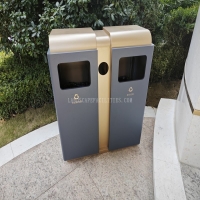Welcome to the website for landscape facilities products and knowledge.
How does the table’s design address concerns about surface resilience to heavy objects?
Contemporary table design has evolved significantly to address critical concerns regarding surface resilience when subjected to heavy objects. The engineering approach begins with material selection, where manufacturers increasingly utilize reinforced composites, tempered glass, and industrial-grade laminates that distribute weight evenly across the surface plane. These materials undergo rigorous testing protocols, simulating years of heavy use in commercial environments to ensure structural integrity remains uncompromised.
The core innovation lies in the strategic reinforcement beneath the surface. Many premium tables incorporate honeycomb matrix structures or cross-braced support systems that create a distributed load-bearing network. This architectural approach prevents localized stress points that traditionally lead to cracking, warping, or permanent surface deformation. The physics principle employed is simple yet effective: spreading impact forces across a wider area dramatically reduces pressure on any single point of contact.
Advanced manufacturing techniques further enhance this resilience. Thermofused melamine surfaces, for instance, bond decorative layers with core substrates at molecular levels, creating a unified material that resists separation under stress. Similarly, post-formed edges on many commercial tables eliminate seams where damage typically initiates. The integration of shock-absorbent underlayers between the surface and supporting frame provides additional protection against sudden impacts from dropped heavy items.
Edge construction represents another critical design consideration. Beefed-up corner reinforcements and continuous edge banding techniques prevent the chipping and splitting that often occurs when heavy objects contact table peripheries. For tables intended for industrial use, some manufacturers incorporate sacrificial replaceable edge components that can be economically swapped when damaged, extending the product's functional lifespan considerably.
The testing standards governing these designs have become increasingly stringent. Reputable manufacturers subject prototypes to cyclic loading tests, where weights exceeding recommended limits are repeatedly placed and removed from surfaces. Additional assessments simulate accidental impacts from tools, equipment, and falling objects that might occur in real-world scenarios. This empirical data informs continuous design refinements that push the boundaries of what table surfaces can withstand.
Ultimately, modern table design transforms surface resilience from a hopeful specification into an engineered certainty. Through intelligent material selection, structural innovation, and rigorous validation processes, today's tables offer unprecedented resistance to heavy objects while maintaining aesthetic appeal. This engineering philosophy ensures that tables perform reliably in demanding environments from industrial workshops to busy restaurants, where surface durability directly impacts operational continuity and cost of ownership.
Related search:

Recommendation
Double-bucket garbage bin, outdoor, metal, multi-color, powder-coated, double-bucket trash can